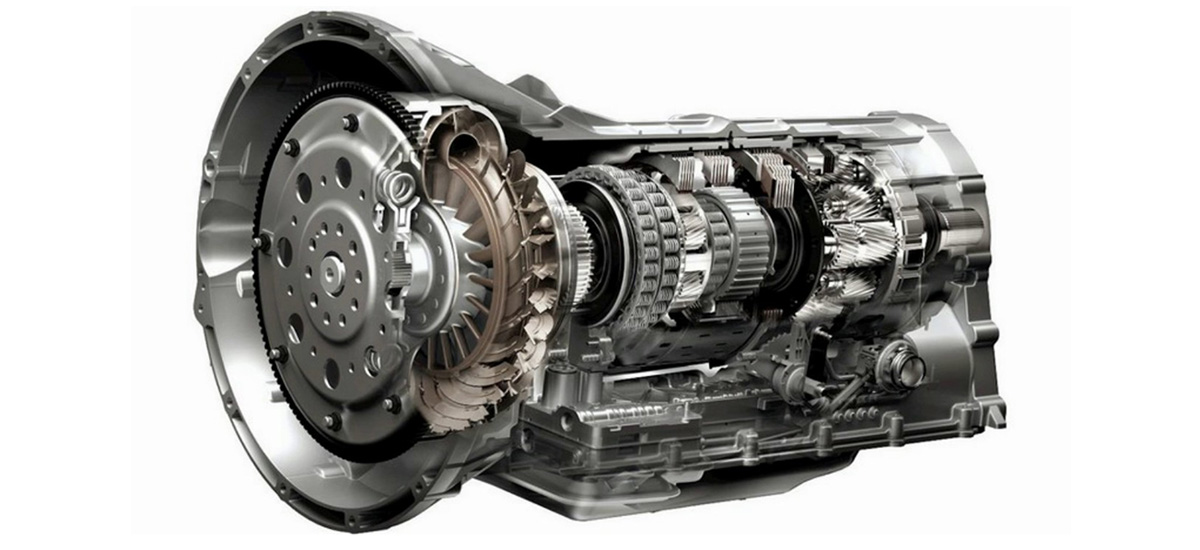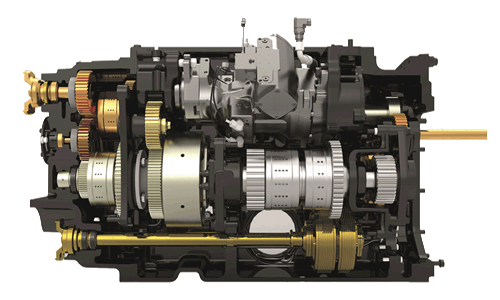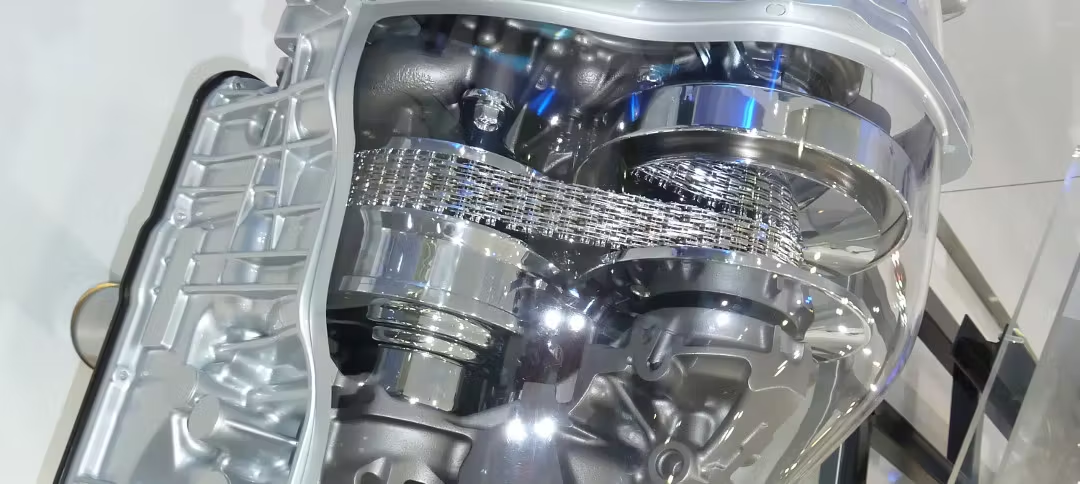Nissan has been in the news a lot lately, and unfortunately, it’s been for all the wrong reasons. Over the course of the last year or two, Nissan’s profitshave plunged (and thenplunged some more!) as sales of the company’s vehicles have started trending in the wrong direction. Nissan has also been forced to deal with a slew of ongoing Nissan CVT transmission problems in a variety of the company’s vehicles. Those who own Nissans have been forced to pay anywhere from $3,500 to $8,000 on average to fix Nissan CVT transmission problems. This has, in turn, forced Nissan toextend the warranties on many of their cars from five years or 60,000 miles to 10 years or 120,000 miles.
It remains to be seen whether or not Nissan is going to be able to get this problem under control. If they aren’t, it could very well lead to their profits plunging even further than they already have, and it could threaten to put the company into a precarious position as far as their future is concerned. But in the meantime, many Nissan owners are having to deal with the Nissan CVTtransmission problems found in a bunch of Nissan’s most popular vehicles. Learn more about some of the specific problems below.
A continuously variable transmission (CVT) is an automatic transmission that can change seamlessly through a continuous range of gear ratios. This contrasts with other transmissions that provide a limited number of gear ratios in fixed steps. Mar 19, 2021 A CVT is lighter than a traditional automatic, and the smoother operation puts less demand on the engine, helping to improve the fuel efficiency. An average CVT sedan/hatchback can get about 40 miles per gallon.
The CVT finds that exact spot and stays right there. For example, for the 2014 Forester, Subaru introduced a CVT. With the same engine as the previous generation, the new Forester gets FIVE (!) more mile per gallon. The CVT finds the most fuel efficient point in the engine. Engines cannot pull out a constant level of power at all speeds. There are only specific speeds at which an engine can extract maximum horsepower, torque, and fuel efficiency and there is no means of tying road speed to specific engine speed. A CVT does nothing but vary the engine speed to extract the maximum power and fuel efficiency.
What Is a CVT?
Before we get into talking about some of the specific Nissan CVT transmission problems that are out there, you need to know exactly what a continuously variable transmission, or CVT, is. Sometimes called a shiftless transmission or a pulley transmission, a CVT is a type of automatic transmission that utilizes variable-width pulleys and a flexible belt as opposed to fixed gears like a regular automatic transmission. CVTs are designed to deliver seamless acceleration by helping cars avoid having to shift from one gear to another, which can sometimes cause a car to hesitate or jerk suddenly.
Over the last 20 years or so, there are a number of car companies that havestarted using CVTs in their vehicles. From Audi and Honda to Subaru and Toyota, many of the major car companies have bought into CVT technology to some degree. But none have bought into it more than Nissan. Nissan quite literally bought into CVT technology at one point by purchasing a stake in JATCO, a company that has been responsible for building many of the CVT transmissions found in cars all throughout the world. This should illustrate just how committed Nissan has been to CVT despite all the Nissan CVT transmission problems that have popped up over time.
The Introduction of the Nissan CVT
There isn’t anything particularly new about CVT technology. Believe it or not, Leonardo da Vinci came up with one of the initial concepts for the technology way back in the late 1400s, and it appeared in some of the earliest automobiles that were invented in the late 1800s. Nissan has also been using CVT technology in its cars for decades now. They first started incorporating CVTs into their vehicles in the early 1990s when they released the1992 Nissan March that contained the N-CVT, which was based on the Fuji Heavy Industries ECVT. They then went on to design their very own CVT in the years that followed and worked them into several of their Japanese models.
Nissan didn’t get serious about adding CVTs to their U.S. vehiclesuntil the early 2000s, though. The 2003 Nissan Murano, which was released in 2002, was the first Nissan to feature a CVT transmission in the U.S. It came in the form of the XTRONIC CVT from Nissan, and it marked a complete change in the way that Nissan would approach transmissions. Within just a few years, Nissan shifted to including CVTs in almost all of the vehicles they released in the U.S. CVTs were soon found in Nissan Altimas, Nissan Pathfinders, Nissan Rogues, Nissan Sentras, and Nissan Versas. It seemed like such an exciting time for Nissan, but it wouldn’t be long before the Nissan CVT transmission problems would start to appear.
Beginning of the Nissan CVT Transmission Problems
When Nissan first started introducing CVT technology into their North American cars in the early 2000s, there was a lot of fanfare that surrounded them. People thought that CVTs could potentially be the transmissions found in all cars at some point in the near future. But it didn’t take very long for some people who owned the 2003 Nissan Murano to start to see signs that the CVTs in Nissans might not be all they were cracked up to be. They noticed Nissan CVT transmission problems like:
- Difficulty accelerating
- Shaking and/or stuttering during acceleration
- Transmissions running too hot
- Transmissions shutting down without warning
Transmission failure was—and is still is—one of the most common complaints that people had about the 2003 Nissan Murano. The CVTs in these Muranos would give out unexpectedlyright around the 118,000-mile mark on average and force people to pay upwards of $4,100 for transmission repairs. In many cases, the owners of Muranos had to have their transmissions replaced altogether, which eventually led to Nissan having to extend the original warranty that came with the car. It would, unfortunately, be a sign of things to come as it was the first Nissan to experience Nissan CVT transmission problems, but as you’re about to find out, it was not the last.
4th and 5th Generation Nissan Altima Transmission Problems
The 4th generation Nissan Altima—which was introduced in 2007 and replaced by the 5th generation Nissan Altima in 2012—was the recipient of a series of complaints from those who drove them. People who owned an Altima during this time period reported experiencing everything from steering wheel lock failure to instances in which their dashboards melted. But one of the biggest issues in these Altimas was CVT failure. In 2007 Altimas, for example, many people reported CVT transmission failure ataround the 100,000-mile mark and found that it cost about $4,400 to repair. The problem persisted over the next five years with many people also reporting CVT transmission failure in 2012 Nissan Altimas ataround the 110,000-mile mark and at a cost of about $3,200.

Nissan vowed to try and fix the issues that so many people were having with the CVT transmissions in their Altimas, but they were unable to do it throughout the duration of the 4th generation Altima’s lifespan. The issues continued with the 5th generation Altima, and some might argue that they even managed to get worse. Many people who owned the 2013 Nissan Altima started to notice Nissan CVT transmission problems ataround the 53,000-mile mark and found that they cost around $3,100 to fix. It caused many Altima owners to second-guess their decision to buy Nissans and is at least partly to blame for Nissan’s current predicament.
3rd and 4th Generation Nissan Pathfinder Transmission Problems
Nissan CVT transmission problems have become pretty much synonymous with the Nissan Altima at this point, which is why we decided to discuss the Altima first. But the Nissan Pathfinder was actually one of the first Nissans outside of the Murano to have a CVT transmission installed in it way back in 2005 when the first 3rd generation Nissan Pathfinder was released. And not coincidentally, that year’s Pathfinder ended up going down as one of the worst Pathfinder model years for transmissions in the Pathfinder’s history.
Those who owned a 2005 Nissan Pathfinder had a variety of widespread transmission problems, including coolant leaking into their transmissions and causingtransmission failure. These problems started to appear ataround the 90,000-mile mark in these Pathfinders and cost right around $3,500 to fix. They also showed up in the 2006 and 2007 Nissan Pathfinders before Nissan appeared to get its act together and reduce the CVT-related issues found in Pathfinders.
Cvt Engine
But they reared their ugly head again when the 4th generation Nissan Pathfinder was released in the form of the 2014 Nissan Pathfinder. That model Pathfinder would go on to beinvolved in a class-action lawsuit that claimed the Pathfinder would shake very violently when it was driven between 15 and 30 miles per hour in some instances. It was a problem that appeared in some 2014 Pathfindersas soon as the 32,000-mile mark and cost $4,000 to fix on average.


1st and 2nd Generation Nissan Rogue Transmission Problems
First released in 2007, the Nissan Rogue has, somewhat surprisingly, turned into one of the most popular Nissan models ever. When it was first released, some people didn’t know what to make of it, but thanks to the rise of crossover SUVs, it’s transformed into a staple in the Nissan lineup. But with that being said, it’s not without its Nissan CVT transmission problems, which it has experienced since pretty much the beginning. Both the 1st generation Rogue, which was manufactured by Nissan from 2008 through 2013, and the 2nd generation, which was manufactured by Nissan from 2014 through 2019, have been hit with the same transmission issues as other Nissans.
The initial 2008 Nissan Rogue, for example, would sometimes stop accelerating or stop driving completely for some people due to Nissan CVT transmission problems ataround the 86,000-mile mark. It cost almost $3,000 to fix the issues that caused this to take place. Many early Rogue owners also reported their transmissions failing completely ataround the 125,000-mile mark, thus forcing them to pay almost $3,200 on average to repair or replace their CVT transmissions.
This trend kept up once the 2nd generation Rogue was released with the 2014 Rogue starting to show signs of trouble in many cases ataround the 80,000-mile mark and forcing Rogue owners to endure average repair bills in the $3,500 range. There haven’t been as many Nissan CVT transmission problems reported with Rogues in more recent years, but all of this has scared off some people who might normally consider buying a Rogue.
6th Generation Nissan Sentra Transmission Problems
The Nissan Sentra is one of the longest-running models in the Nissan lineup. It was first released way back in the early 1980s, and it continues to be a linchpin for the Nissan name. But that doesn’t mean that it wasn’t without its fair share of Nissan CVT transmission problems. When the 6th generation Nissan Sentra was put out in 2013, many people who bought it reported problems like revving and jerking and total CVT transmission failure. It often struck ataround the 80,000-mile mark and cost about $3,500 to fix. The 2013 and 2014 Nissan Sentras, in particular, seemed to give drivers the most fits as far as the Nissan CVT transmission problems go.
1st and 2nd Generation Nissan Versa Transmission Problems
There was one very prominent problem with 1st generation Nissan Versas released between 2007 and 2011 that earned Nissan a lot of negative press. They came equipped with Takata airbags that were later found to be defective. Nissan wasforced to recall these vehicles in May 2016 and July 2017 to replace the airbags that were in them.
But this wasn’t the only problem that portrayed Nissan in a negative light. While the company was dealing with its airbag problem in Versas, they also had to deal with transmission problems in many 1st generation Versas. Owners of the original 2008 Versa, for instance, started reporting Nissan CVT transmission problems that appeared ataround the 120,000-mile mark and cost $3,700 on average to fix.
And those problems only seemed to get worse once the 2nd generation Nissan Versa started to hit showroom floors. Owners of the 2012 Nissan Versa were forced to put up with major transmission problems, including transmission failure. These problems presented themselves ataround the 72,000-mile mark and cost more than $3,500 on average to fix. The Nissan CVT transmission problems got to be so bad that a group of Versa owners eventually filed a class-action lawsuit against Nissan alleging that the CVT transmissions they put into 2nd generation Versas were defective. Nissansettled the case and agreed to provide extended warranties to those who qualified for them based on certain conditions.
What Should You Do With a Car With Nissan CVT Transmission Problems?

To Nissan’s credit, they have stepped up and tried to make things right with many past and current Nissan owners by offering extended warranties to them. These warranties have helped many people cover the costs associated with Nissan CVT transmission problems. But there are some people driving around in Nissans that have Nissan CVT transmission problems that aren’t covered by a warranty. There are also others who don’t feel comfortable about driving around in Nissans because of the Nissan CVT transmission problems that they’ve heard so much about.
If you want to get rid of a Nissan that has CVT transmission problems and get your hands on something new, Cash Cars Buyer will gladly take your Nissan off your hands and give you cash for it. It’ll allow you to go out and buy something that’s safer, more reliable, and less expensive than the Nissan you’re driving now. Contact us today to obtain a quote for your car.
Article Written By Vicente
Cvt Engine Cars
CVT
A CVT, is a type of automatic transmission that provides more useable power & better fuel.
Honda Cvt Engine
Advantages of the CVT
CVT can vary the engine speed as needed to access maximum power as well as maximum fuel efficiency. Flashfxp for mac. This allows the CVT to provide quicker acceleration than a conventional automatic or manual transmission while delivering superior fuel economy.
Disadvantages of the CVT
The CVT’s biggest problem has been user acceptance. Because the CVT allows the engine to rev at any speed, the noises coming from under the hood sound odd to ears accustomed to conventional manual and automatic transmissions. The gradual changes in engine note sound like a sliding transmission or a slipping clutch — signs of trouble with a conventional transmission, but perfectly normal for a CVT. Flooring an automatic car brings a lurch and a sudden burst of power, whereas CVTs provide a smooth, rapid increase to maximum power. To some drivers this makes the car feel slower; in fact a CVT will generally out-accelerate an automatic.
VARIABLE VALVE TIMING
The concept of a static or single-mode combustion engine is a little out of date in today. Because of the nature of fuel injection, carburators, the 4-stroke cycle and valves, the internal combustion engine only really works really well at one particular range of speeds. Any higher or lower and you start to cock up fuel efficiency, reliability and power. To overcome this issue, and to try to make engines more usable throughout their rev ranges, manufacturers invented various different types of variable valve timing. The idea is simple – alter the timing and/or size of the intake and exhaust ports at different engine RPM’s to ensure that the engine is as efficient as possible throughout it’s range of operating speeds.

Cvt Engineering
VTEC
VTEC allows the valves to remain open for two different durations. A short opening time for low-speed operation to give good torque and acceleration, and a larger opening time for higher speeds to give more power. To do this, the camshaft has two sets of cam lobes for each valve and a sliding locking pin on the cam follower that determines which lobe is operating the valve. The locking pin is moved by a hydraulic control valve based on the engine speed and power delivery requirements. The two lobe shapes are referred to as fuel economy cams and high power cams, meaning that Honda engines with this technology are really two engines in one – a performance engine and an economical engine. The two animations below show a pair of cam lobes and followers to demonstrate the fundamental operation of VTEC. The left animation is fuel economy mode – the blue locking pin is not engaged so the two followers run on their respective cam lobes independently. The yellow one is the main cam follower which pushes on the valve. On the right, in power mode, the blue locking pin is engaged so now the red cam follower is locked to the yellow one which, now being driven by the red one, no longer contacts the lower profile cam lobe. Because the red follower is running on a higher profile cam lobe, it now forces the valve to stay open longer.
